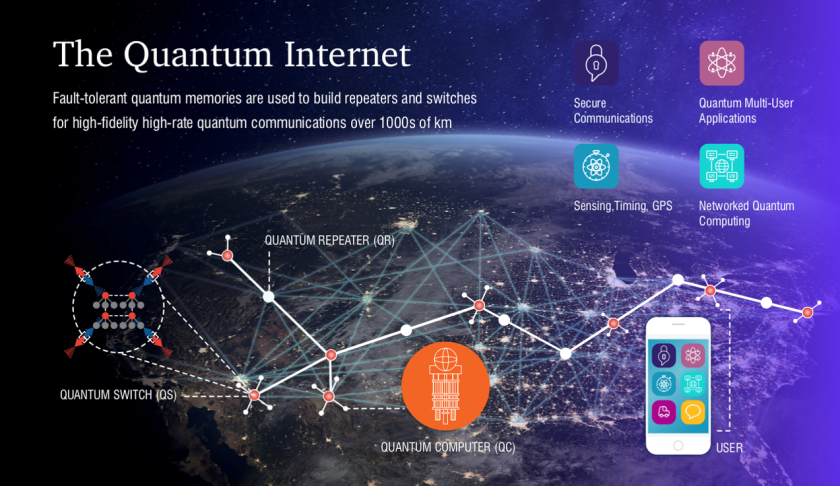BYU Electrical & Computer Engineering faculty Ryan Camacho will help develop a new NSF Engineering Research Center for Quantum Networks.
For the second time, BYU Engineering has been selected to work on a National Science Foundation (NSF) Engineering Research Center (ERC) project, a very competitive NSF flagship investment. The first ERC project awarded to BYU was in 1986 with the development of the Advanced Combustion Engineering Research Center.
The project, led by the University of Arizona, seeks to develop a new NSF Engineering Research Center called the Center for Quantum Networks (CQN). It is an initial five-year, $25 million project with a possible five-year, $24.6 million extension.
Unlike the internet in use today, the quantum internet will move beyond the binary with technology that allows quantum bits, or qubits, to occupy a superposition of both 0 and 1, rather than only one or the other. In other words, this technology will minimize restrictions in digital communication with the ability to move past traditional binary-restricted coding schemes. The vast reach of this technology has the potential to revolutionize security, data privacy, computational abilities, drug discovery, novel material design and more.

Along with faculty from nine other universities, BYU Electrical and Computer Engineering associate professor Ryan Camacho will help advance development and understanding of quantum internet. Dr. Camacho’s primary role will be in the design of quantum components for the network nodes.
“Quantum networks will enable fundamentally different and radical ways of connecting people and machines. In the future, devices won’t just share data, but will be quantum mechanically entangled across space and time. It sounds crazy, but this is no longer science fiction,” said Dr. Camacho.
In addition to further development of the quantum internet, the CQN will address social and policy implications, quantum internet curriculum, and will be responsible for broad, diverse and equitable access to the technology.
“It’s really a privilege for BYU to be a part of the new NSF Center for Quantum Networks,” said Dr. Camacho. “The state of Utah has a long history of being at the center of the most famous networks in US history, from The Golden Spike to ARPANET. Now BYU students will get to say they helped invent the quantum internet!”
Much like the race to the moon, the United States is at the forefront of the race to quantum internet. The Trump Administration signed the National Quantum Initiative Act into law in 2018 and released a White House memorandum titled “A Strategic Vision for America’s Quantum Networks” earlier this year. The Department of Energy also released a report titled “America’s Blueprint for the Quantum Internet” in a press release conference held at the University of Chicago this past July.
At the same press release conference in Chicago, Under Secretary for Science Paul Dabbar--currently serving as the DOE’s principal advisor on fundamental energy research--spoke to the value of developing this technology saying, “Everyone look around. This is what making history looks like...Science and technology alone are not enough. Leadership and initiative are needed to bring out full possibilities. Today is about such leadership, American leadership, on yet another frontier.”
Students interested in getting involved with the project can contact Dr. Camacho for more information.